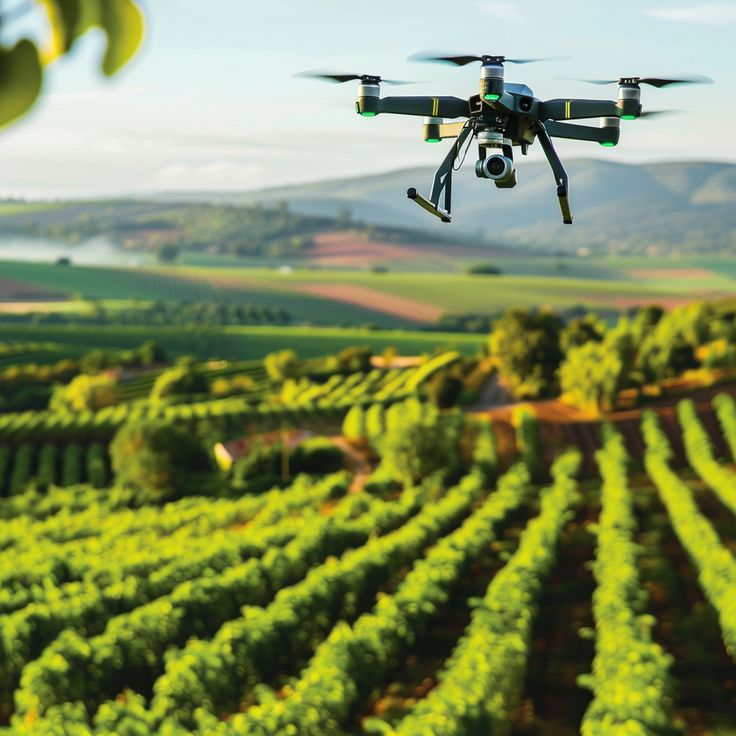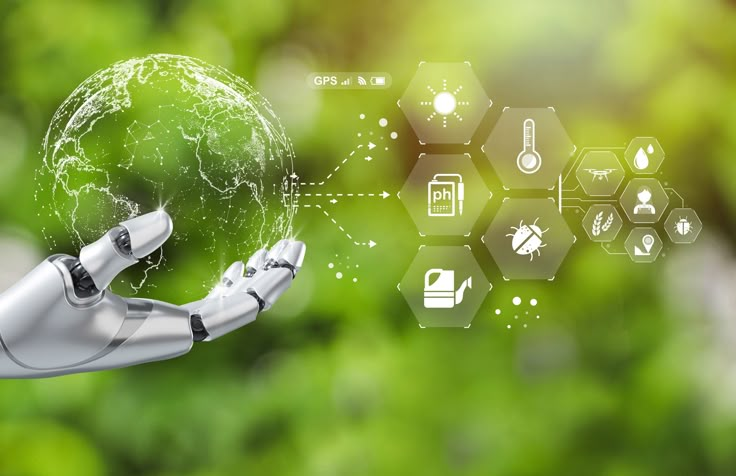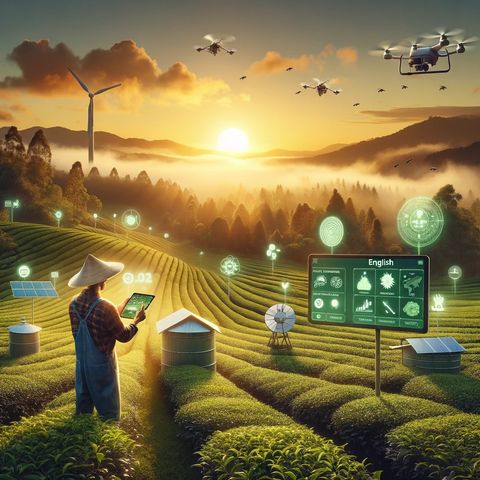In an era increasingly defined by urgent environmental challenges—from climate change and resource depletion to pollution and biodiversity loss—the imperative for sustainable practices has never been more pressing. At the vanguard of this global movement is Green Tech, a revolutionary wave of innovation dedicated to developing and implementing environmentally friendly solutions across every sector. Far from a niche concern, Green Tech encompasses a vast array of technologies and practices designed to minimize human impact on the planet, optimize resource utilization, and foster a truly circular economy. It’s about engineering a future where technological progress and ecological stewardship are not mutually exclusive but profoundly interconnected, ultimately unleashing sustainable solutions for a healthier planet.
The Urgent Call for Green Solutions: Why Now?
To truly grasp the critical importance and accelerating momentum behind Green Tech, it’s essential to understand the dire environmental context that necessitates its rapid development and widespread adoption.
A. Escalating Climate Crisis
The most visible and pressing challenge is the accelerating climate crisis, primarily driven by anthropogenic greenhouse gas emissions.
- Global Warming: Rising global temperatures are leading to more frequent and intense heatwaves, shifting weather patterns, and disrupting ecosystems worldwide.
- Extreme Weather Events: We are witnessing an increase in the frequency and severity of extreme weather phenomena, including devastating floods, prolonged droughts, powerful storms, and raging wildfires, causing immense human suffering and economic damage.
- Sea Level Rise: Thermal expansion of oceans and melting glaciers and ice sheets are contributing to rising sea levels, threatening coastal communities and ecosystems globally.
- Carbon Emissions: The primary culprit is the massive release of carbon dioxide and other greenhouse gases from burning fossil fuels for energy, industry, and transportation, trapping heat in the atmosphere.
B. Resource Depletion and Scarcity
Our current linear economic model—take, make, dispose—is depleting finite natural resources at an alarming rate.
- Finite Fossil Fuels: The reliance on coal, oil, and natural gas is unsustainable. These resources are finite, and their extraction often has severe environmental consequences (e.g., habitat destruction, water pollution).
- Water Scarcity: Access to fresh, clean water is becoming a critical issue in many regions due to over-extraction, pollution, and changing precipitation patterns, leading to agricultural, industrial, and human health crises.
- Mineral Depletion: The extraction of essential minerals (e.g., rare earth elements for electronics, copper, lithium) for manufacturing is rapidly depleting accessible reserves, often involving environmentally destructive mining practices.
- Biodiversity Loss: Human activities, including habitat destruction, pollution, and climate change, are driving unprecedented rates of species extinction, threatening the delicate balance of ecosystems that provide essential services to humanity.
C. Widespread Pollution
Industrialization and consumerism have led to pervasive pollution across all environmental compartments.
- Air Pollution: Emissions from factories, vehicles, and power plants contribute to smog, acid rain, and respiratory diseases, particularly in urban areas.
- Water Pollution: Industrial discharge, agricultural runoff, and plastic waste contaminate rivers, lakes, and oceans, harming aquatic life and human health. The issue of microplastics is now a global concern.
- Land Degradation: Deforestation, unsustainable agricultural practices, and improper waste disposal are leading to soil erosion, desertification, and the accumulation of hazardous waste in landfills.
- Electronic Waste (E-waste): The rapid obsolescence of electronic devices generates vast amounts of e-waste, which contains toxic materials and poses significant disposal challenges.
These interconnected environmental crises demand a proactive and technological response, making Green Tech not just beneficial, but absolutely essential for the planet’s future and human well-being.
Core Pillars of Green Tech: Innovating for Sustainability
Green Tech is not a single technology but a broad and interdisciplinary field that leverages cutting-edge science and engineering to address environmental challenges. Its core pillars define the key areas of innovation.
A. Renewable Energy Systems
The transition from fossil fuels to clean, inexhaustible energy sources is the cornerstone of decarbonization.
- Solar Power: Technologies that convert sunlight into electricity, including photovoltaic (PV) panels for homes and large-scale solar farms, and concentrated solar power (CSP) systems. Innovations focus on efficiency, cost reduction, and energy storage.
- Wind Power: Harnessing kinetic energy from wind through onshore and offshore wind turbines. Advances include larger, more efficient turbines and floating offshore platforms that unlock new areas.
- Geothermal Energy: Utilizing heat from the Earth’s interior to generate electricity or provide direct heating/cooling. Innovations focus on enhanced geothermal systems (EGS) that can access deeper, hotter reservoirs.
- Hydropower: Generating electricity from the movement of water. While large dams have environmental impacts, smaller, run-of-river hydro systems are gaining attention.
- Energy Storage (Batteries): Crucial for integrating intermittent renewables. Advances in battery technology (e.g., lithium-ion, solid-state, flow batteries) are driving down costs and increasing capacity for grid-scale storage, electric vehicles, and residential applications.
B. Energy Efficiency Technologies
Reducing energy consumption across all sectors is equally vital to decarbonization and resource conservation.
- Smart Grids: Modernizing electricity grids with digital technologies to enable two-way communication, optimize energy distribution, integrate renewables, and empower consumers with demand-side management.
- Green Buildings and Smart Homes: Designing and constructing buildings that minimize energy consumption through superior insulation, passive solar design, smart lighting, efficient HVAC systems, and automated energy management.
- Industrial Efficiency: Implementing advanced manufacturing processes, waste heat recovery, and energy management systems in factories to reduce energy intensity.
- Efficient Transportation: Developing electric vehicles (EVs), improving fuel efficiency in traditional vehicles, and investing in public transport and active mobility (cycling, walking) to reduce emissions.
- Smart Appliances: Energy-efficient appliances with IoT connectivity that can optimize their operation based on grid conditions or user preferences.
C. Waste Management and Circular Economy Solutions
Moving away from the linear ‘take-make-dispose’ model towards a regenerative, circular economy where waste is minimized and resources are kept in use.
- Advanced Recycling Technologies: Innovations in chemical recycling for plastics, better sorting technologies, and processes for recovering valuable materials from complex waste streams (e.g., e-waste, textiles).
- Waste-to-Energy: Technologies that convert non-recyclable waste into electricity or heat, reducing landfill volume.
- Composting and Anaerobic Digestion: Organic waste management techniques that turn food and yard waste into nutrient-rich compost or biogas.
- Product Lifecycle Management (PLM): Designing products for durability, repairability, reusability, and recyclability from the outset, embedding circularity into design.
- Resource Recovery: Technologies to extract valuable resources from wastewater, industrial by-products, or even atmospheric carbon.
D. Sustainable Agriculture and Food Systems
Innovating to produce food more sustainably, reducing environmental impact, and ensuring food security.
- Precision Agriculture: Using IoT sensors, drones, and AI to monitor crop health, soil conditions, and weather, enabling precise application of water, fertilizers, and pesticides, reducing waste and pollution.
- Vertical Farming and Controlled Environment Agriculture (CEA): Growing crops indoors in multi-layered setups with controlled temperature, light, and humidity, using significantly less water and land, and enabling local food production in urban areas.
- Alternative Proteins: Developing plant-based meats, cultivated (lab-grown) meat, and insect-based proteins to reduce the environmental footprint of traditional animal agriculture.
- Waste Reduction in Food Supply Chain: Technologies to monitor and reduce food loss and waste from farm to fork, improving resource efficiency.
- Sustainable Water Management: Technologies for efficient irrigation, wastewater treatment for agricultural reuse, and desalination plants powered by renewables.
E. Pollution Control and Remediation
Developing technologies to prevent, monitor, and clean up environmental pollutants.
- Carbon Capture, Utilization, and Storage (CCUS): Technologies that capture CO2 emissions from industrial sources or directly from the atmosphere, either for storage underground or for conversion into useful products.
- Advanced Water Treatment: Innovative filtration, purification, and desalination technologies to provide clean drinking water and treat industrial wastewater.
- Air Purification: Technologies for filtering pollutants from industrial emissions and for improving indoor air quality.
- Bioremediation: Using biological agents (e.g., microbes, plants) to clean up contaminated soil or water.
- Plastic Upcycling and Degradation: Research into enzymes or new materials that can effectively break down plastics or convert them into valuable products.
Transformative Advantages of Green Tech Solutions
The widespread adoption of Green Tech offers a multitude of profound benefits that extend far beyond environmental protection, creating economic opportunities and improving human well-being.
A. Climate Change Mitigation and Adaptation
The most direct and critical advantage of Green Tech is its ability to address the climate crisis.
- Reduced Greenhouse Gas Emissions: Transitioning to renewable energy, improving energy efficiency, and implementing carbon capture technologies directly reduces the emission of gases responsible for global warming.
- Enhanced Climate Resilience: Green infrastructure (e.g., green roofs for stormwater management, permeable pavements, nature-based solutions) helps communities adapt to the impacts of climate change, such as extreme heat and flooding.
- Decarbonization of Industries: Green Tech provides the tools and processes for heavy industries (e.g., steel, cement, chemicals) to significantly reduce their carbon footprint, moving towards net-zero operations.
B. Economic Growth and Job Creation
Green Tech is not just an environmental imperative; it’s a powerful engine for economic development.
- New Industries and Markets: The transition to a green economy creates entirely new sectors (e.g., renewable energy manufacturing, EV charging infrastructure, carbon capture services), fostering innovation and investment.
- Job Creation: Investment in Green Tech generates millions of jobs across various skill levels—from engineers and researchers to installers, manufacturers, and maintenance technicians—contributing to a ‘green collar’ workforce.
- Increased Energy Independence: Nations that invest in domestic renewable energy sources reduce their reliance on volatile fossil fuel markets and geopolitical risks associated with energy imports, enhancing national energy security.
- Competitive Advantage: Companies and nations that lead in Green Tech innovation gain a competitive edge in global markets, attracting investment and talent.
C. Resource Efficiency and Circular Economy Benefits
Green Tech fundamentally shifts how we manage and utilize resources, leading to long-term sustainability.
- Conservation of Natural Resources: By reducing reliance on finite resources (e.g., fossil fuels, virgin materials) and promoting recycling and reuse, Green Tech helps conserve the planet’s finite natural capital.
- Waste Reduction and Value Creation: Converting waste into valuable products or energy not only reduces landfill burden but also creates new revenue streams and closes resource loops, embodying circular economy principles.
- Reduced Pollution and Health Benefits: Less reliance on fossil fuels, cleaner industrial processes, and improved waste management lead to reductions in air, water, and soil pollution, resulting in significant public health benefits (e.g., lower rates of respiratory illnesses, cleaner drinking water).
D. Improved Resilience and Risk Management
Green Tech builds more robust and adaptable systems, enhancing resilience to environmental and economic shocks.
- Distributed Energy Systems: Decentralized renewable energy systems (e.g., rooftop solar, microgrids) are more resilient to large-scale grid failures or natural disasters than centralized fossil fuel plants.
- Sustainable Supply Chains: Investing in local and circular supply chains reduces reliance on distant, vulnerable sources, making businesses less susceptible to geopolitical disruptions or pandemics.
- Reduced Exposure to Price Volatility: Reliance on free and abundant renewable energy sources (sun, wind) reduces exposure to the price volatility of fossil fuels, providing greater economic stability.
- Mitigation of Environmental Risks: Proactive adoption of Green Tech reduces exposure to regulatory risks (e.g., carbon taxes), climate-related physical risks (e.g., extreme weather damage), and reputational risks associated with unsustainable practices.
E. Enhanced Quality of Life and Social Equity
Ultimately, Green Tech contributes to a higher quality of life for all and can promote greater social equity.
- Cleaner Environment: Reductions in pollution lead to cleaner air, water, and healthier ecosystems, directly improving the quality of life for communities.
- Access to Affordable Energy: Decentralized renewable energy solutions can bring reliable, affordable power to remote communities previously lacking access, improving education, health, and economic opportunities.
- Healthier Living Spaces: Green building design improves indoor air quality, reduces exposure to toxins, and creates more comfortable and energy-efficient living and working environments.
- Food Security: Sustainable agricultural practices enhance soil health, water availability, and crop resilience, contributing to more stable and secure food systems globally.
Challenges and Hurdles in Green Tech Adoption
Despite the compelling advantages, the widespread adoption of Green Tech faces significant technical, economic, policy, and social challenges that must be systematically addressed.
A. High Initial Investment and Infrastructure Costs
While long-term operating costs are often lower, many Green Tech solutions, particularly large-scale renewable energy projects or advanced recycling facilities, require substantial upfront capital investment. This can be a barrier for developing countries, smaller businesses, or even large corporations needing to retrofit existing infrastructure. The cost of building new smart grids or developing widespread EV charging networks is immense.
B. Intermittency of Renewable Energy
Solar and wind power, while abundant, are intermittent—they only generate electricity when the sun shines or the wind blows. This poses challenges for grid stability and reliability, requiring:
- Massive Energy Storage: Developing and deploying grid-scale battery storage solutions, which are still relatively expensive, to store excess energy and release it when demand is high or generation is low.
- Grid Modernization: Upgrading aging electricity grids to be ‘smarter’ and more flexible, capable of handling variable renewable inputs and two-way power flows.
- Base Load Power: The need for reliable ‘base load’ power when renewables are not generating, which currently often still relies on natural gas or nuclear, making a full transition complex.
C. Policy and Regulatory Frameworks
Robust and consistent policy and regulatory support are crucial for accelerating Green Tech adoption, but these are often lacking or inconsistent.
- Inconsistent Subsidies and Incentives: Green Tech often relies on government subsidies, tax credits, or carbon pricing mechanisms to be competitive with established fossil fuels. Inconsistent or short-term policies create uncertainty for investors.
- Regulatory Hurdles: Permitting processes for renewable energy projects can be slow and complex. Existing regulations designed for traditional industries may not be suitable for emerging Green Tech innovations.
- International Cooperation Gaps: Global environmental challenges require international cooperation, but geopolitical tensions and national interests often hinder the development and enforcement of effective international climate agreements and trade policies that support Green Tech.
D. Supply Chain Dependencies and Resource Availability
The rapid scale-up of certain Green Techs, particularly batteries and electronics, creates new supply chain vulnerabilities.
- Critical Mineral Shortages: Increasing demand for critical minerals like lithium, cobalt, nickel, and rare earth elements (essential for EVs, batteries, and wind turbines) raises concerns about supply security, environmental impact of mining, and geopolitical control over these resources.
- Geopolitical Concentration: The processing and refining of many critical minerals are concentrated in a few countries, creating single points of failure and geopolitical risks in the Green Tech supply chain.
- Manufacturing Capacity: Scaling up manufacturing capacity for Green Tech components (e.g., solar panels, wind turbine blades, EV batteries) to meet global demand requires massive investment and time.
E. Consumer Behavior and Social Acceptance
Technological solutions alone are not enough; widespread adoption also depends on human behavior and social acceptance.
- Awareness and Education: Lack of public awareness about the benefits of Green Tech or misconceptions about its reliability can hinder adoption.
- Upfront Cost for Consumers: While long-term savings exist, the higher upfront cost of certain green products (e.g., EVs, solar panels for homes) can be a barrier for consumers without sufficient incentives.
- NIMBYism (Not In My Backyard): Resistance from local communities to the development of renewable energy projects (e.g., wind farms, solar arrays) due to visual impact, noise, or perceived environmental concerns.
- Behavioral Change: Many sustainable solutions require changes in consumer behavior (e.g., reducing consumption, adopting public transport, waste sorting), which can be difficult to achieve at scale.
F. Technical Integration and Legacy Infrastructure
Integrating new Green Tech solutions with existing, often aging, infrastructure is a complex technical challenge.
- Grid Integration: Integrating large-scale intermittent renewables into a legacy grid designed for centralized, predictable power generation requires advanced grid management systems, smart meters, and distributed energy resource management.
- Retrofitting Existing Buildings: Making existing buildings energy-efficient is often more challenging and costly than designing new green buildings from scratch.
- Circular Economy Logistics: Establishing efficient collection, sorting, repair, and recycling infrastructure for a wide range of materials across diverse geographies is a massive logistical undertaking.
The Future Trajectory of Green Tech: Innovation and Integration
Despite the challenges, the trajectory for Green Tech is one of accelerating innovation, deeper integration, and increasingly comprehensive solutions, driven by a global commitment to sustainability.
A. Hyper-Efficient Materials and Next-Gen Renewables
Future Green Tech will push the boundaries of energy capture and efficiency through advanced materials.
- Perovskite Solar Cells: Next-generation solar materials that promise higher efficiencies and lower manufacturing costs than traditional silicon PV, potentially enabling flexible and transparent solar applications.
- Advanced Wind Turbine Designs: Innovations like bladeless wind turbines, airborne wind energy systems, and more efficient materials for blades will unlock greater wind energy potential.
- Nuclear Fusion/Fission: Long-term research into cleaner, safer, and more efficient nuclear energy (including small modular reactors – SMRs and fusion reactors) could provide a game-changing source of abundant, zero-carbon base-load power.
- Smart Materials for Energy Efficiency: Development of self-regulating building materials (e.g., dynamic windows, phase-change materials) that automatically adapt to optimize energy performance.
B. AI-Powered Optimization and Digital Twins for Sustainability
Artificial Intelligence will become even more central to optimizing Green Tech systems.
- Grid Optimization: AI will dynamically balance supply and demand on smart grids, predict renewable generation, optimize battery charging, and manage distributed energy resources with unprecedented precision, ensuring grid stability.
- Sustainable Manufacturing: AI will optimize industrial processes for maximum resource efficiency, minimal waste, and reduced emissions, supporting the decarbonization of heavy industries.
- Digital Twins for Green Assets: Creating virtual replicas of renewable energy plants, green buildings, or entire cities to simulate performance, predict maintenance needs, and optimize energy flows in real-time for maximum sustainability.
- Climate Modeling and Prediction: Advanced AI models will provide more accurate climate predictions and enable better decision-making for adaptation strategies.
C. Carbon Capture, Utilization, and Removal (CCUR) at Scale
Technologies for managing atmospheric carbon will become increasingly vital.
- Direct Air Capture (DAC): Technologies that pull CO2 directly from the atmosphere, providing a crucial tool for removing legacy emissions and achieving net-negative emissions.
- Enhanced Carbon Utilization: Innovations in converting captured CO2 into valuable products like fuels, building materials, or chemicals, creating economic incentives for carbon removal.
- Natural Carbon Sinks: Large-scale initiatives for reforestation, afforestation, and sustainable land management to enhance natural carbon sequestration.
D. Comprehensive Circular Economy Ecosystems
The vision of a fully circular economy will be realized through sophisticated Green Tech ecosystems.
- Advanced Sorting and Robotics: AI-powered robotics for highly efficient and granular sorting of diverse waste streams, enabling higher quality recycled materials.
- Material Passports and Digital Product IDs: Digital tracking of materials and components throughout a product’s lifecycle to facilitate easier recycling, repair, and reuse.
- Service-Based Models: A shift from product ownership to product-as-a-service models (e.g., lighting-as-a-service) incentivizing manufacturers to design for durability and recyclability.
- Industrial Symbiosis: Businesses collaborating to use each other’s waste as raw material, creating localized circular loops.
E. Nature-Based Solutions Enhanced by Technology
Green Tech will increasingly integrate with and enhance natural solutions for environmental challenges.
- Restoration Robotics: Autonomous robots for reforestation, monitoring ecosystem health, or managing invasive species in remote or challenging environments.
- Bio-inspired Design (Biomimicry): Learning from nature’s efficient designs and processes to create sustainable technologies and materials.
- Smart Agriculture for Regeneration: Technologies supporting regenerative agriculture practices that enhance soil health, biodiversity, and carbon sequestration in farmlands.
- Water Management with AI: AI-driven systems optimizing water distribution, leak detection, and smart irrigation based on real-time environmental data.
Conclusion
In the crucible of escalating environmental pressures, Green Tech stands as humanity’s most potent and promising response, unleashing a wave of sustainable solutions across the globe. It represents a fundamental recalibration of our relationship with technology and the planet, moving decisively beyond the unsustainable practices of the past. By pioneering innovations in renewable energy, championing radical energy efficiency, fostering circular economy models, revolutionizing sustainable agriculture, and developing advanced pollution control mechanisms, Green Tech is not merely mitigating environmental damage; it is actively building a more resilient, equitable, and prosperous future.
While the path to a truly sustainable world is fraught with significant hurdles—requiring massive investment, overcoming intermittency challenges, establishing robust policy frameworks, and navigating complex supply chains—the momentum behind Green Tech is undeniable. The future promises hyper-efficient materials, AI-driven optimization through digital twins, widespread carbon removal technologies, and comprehensive circular economy ecosystems, all underpinned by a deepening integration with nature-based solutions. Ultimately, investing in and championing Green Tech is not just an environmental imperative; it is the definitive blueprint for economic growth, human well-being, and the very survival of our planet. It is indeed unleashing sustainable solutions for generations to come.














